Painting with Fibre
Cloth, bamboo, river reed, wool, silk…from woven eel catchers to middle eastern rugs, ikats, kimonos and renaissance wall tapestries, textile art is an artistic practice steeped in history. Leonie Hart takes a look at this curious ly mesmerising artform and talks to local textile artist Barbara Stephenson.
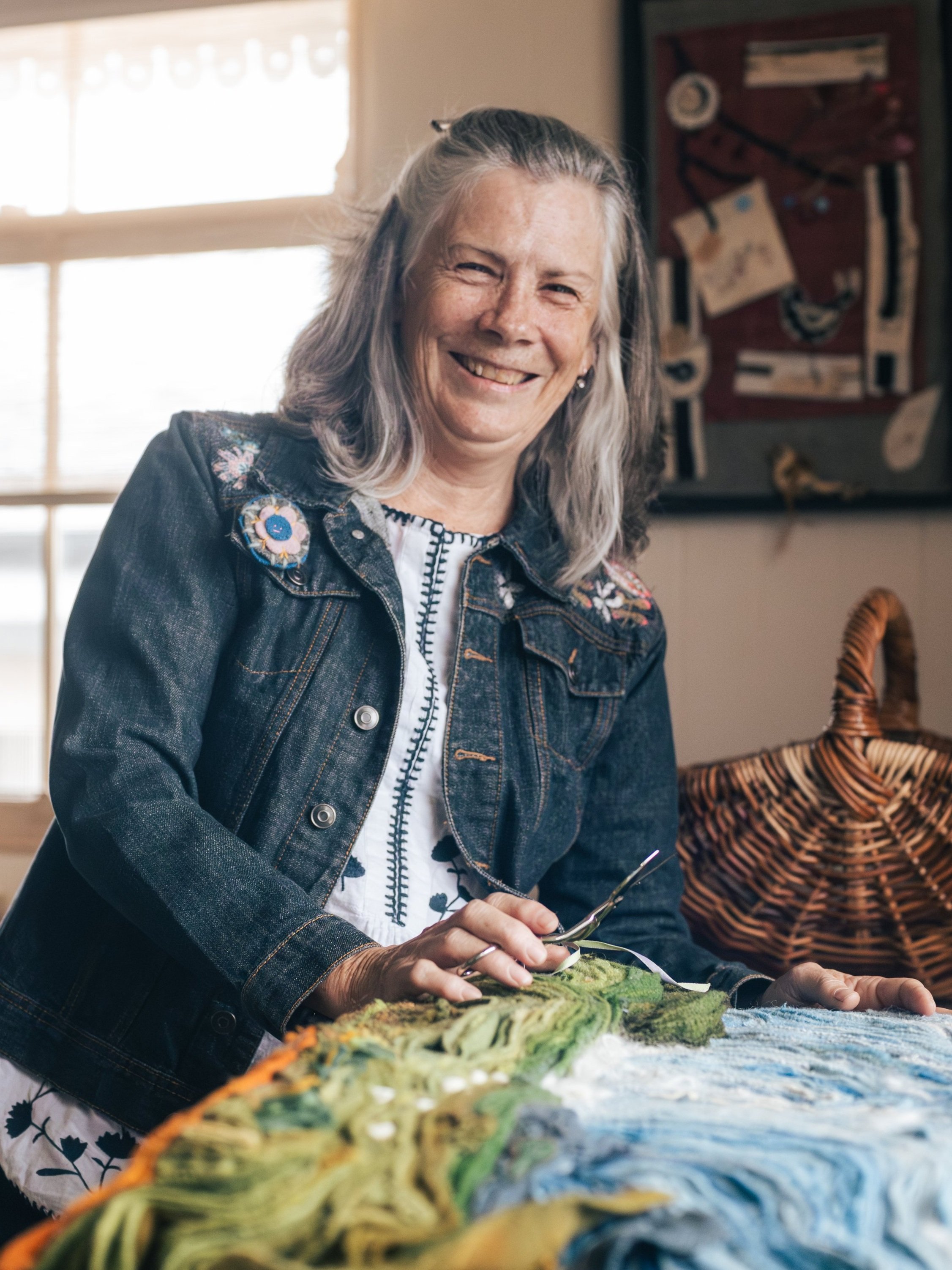
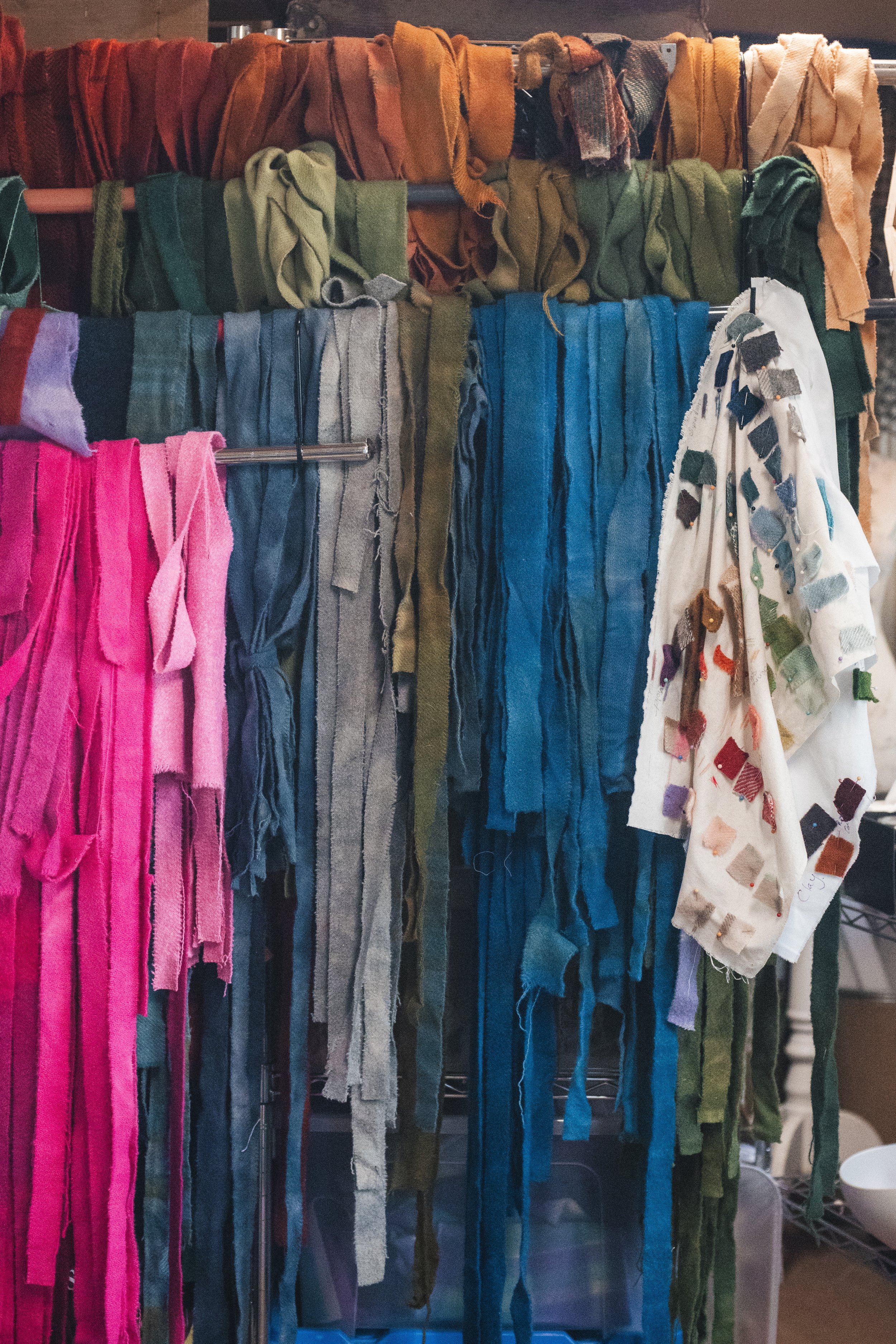
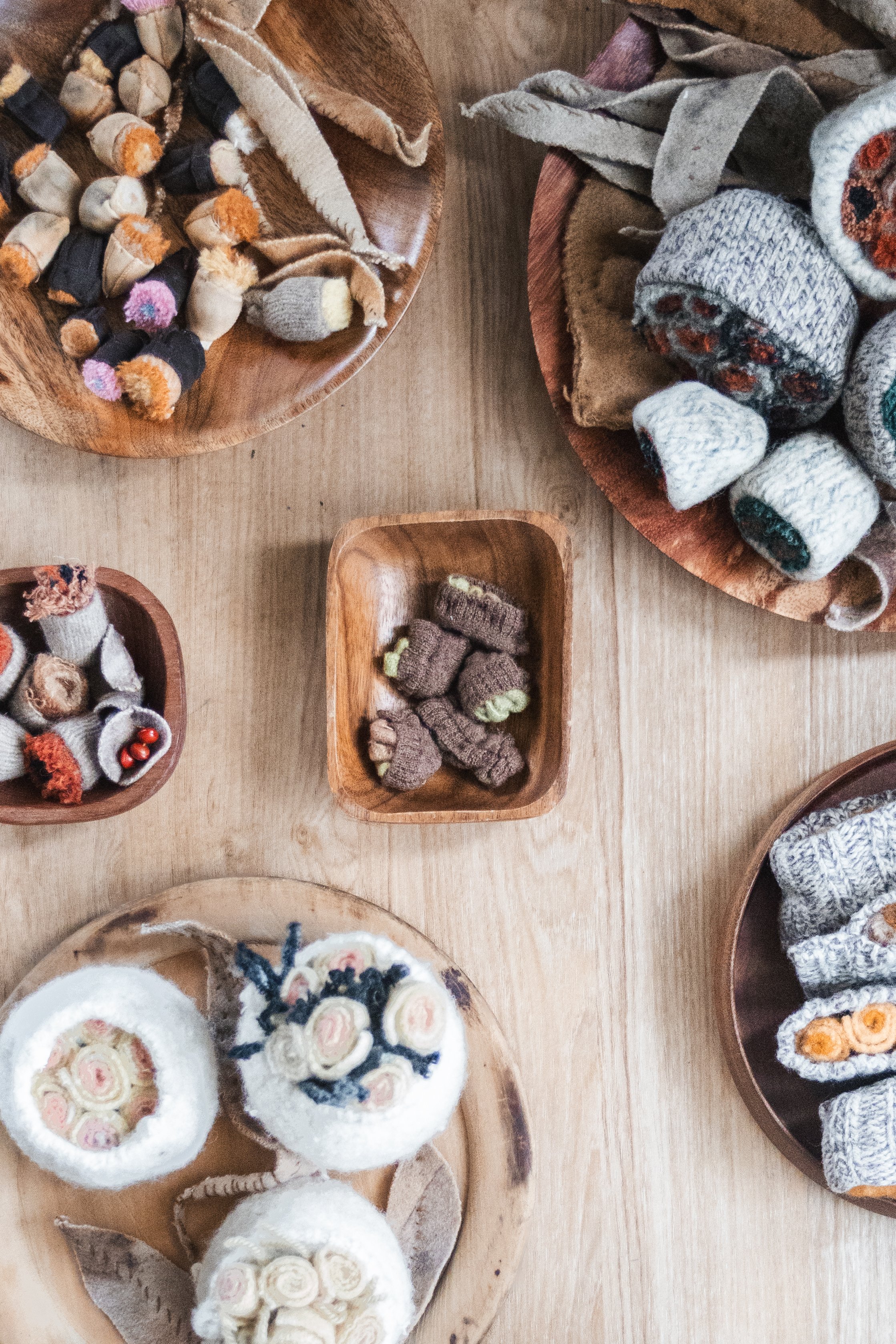

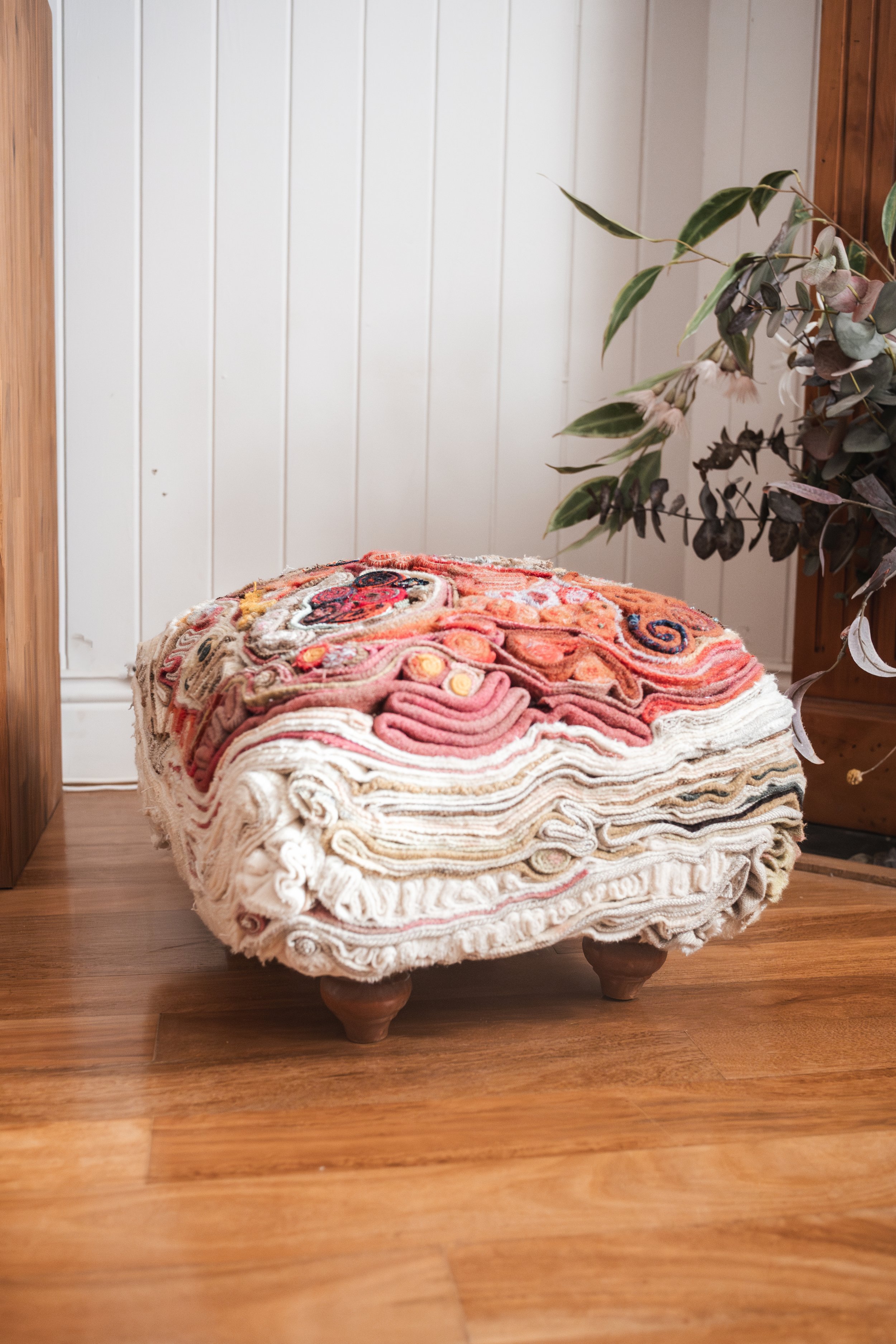

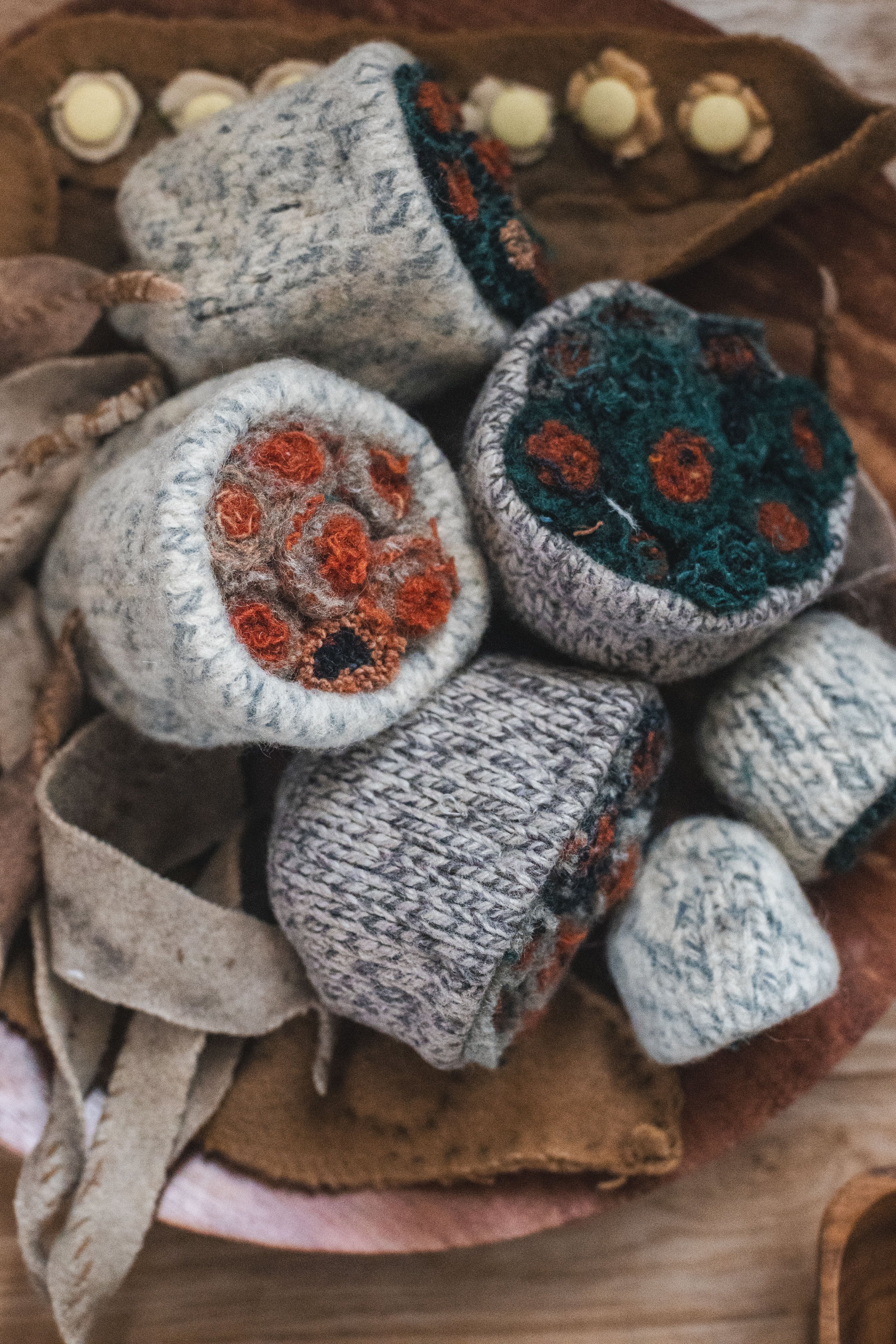
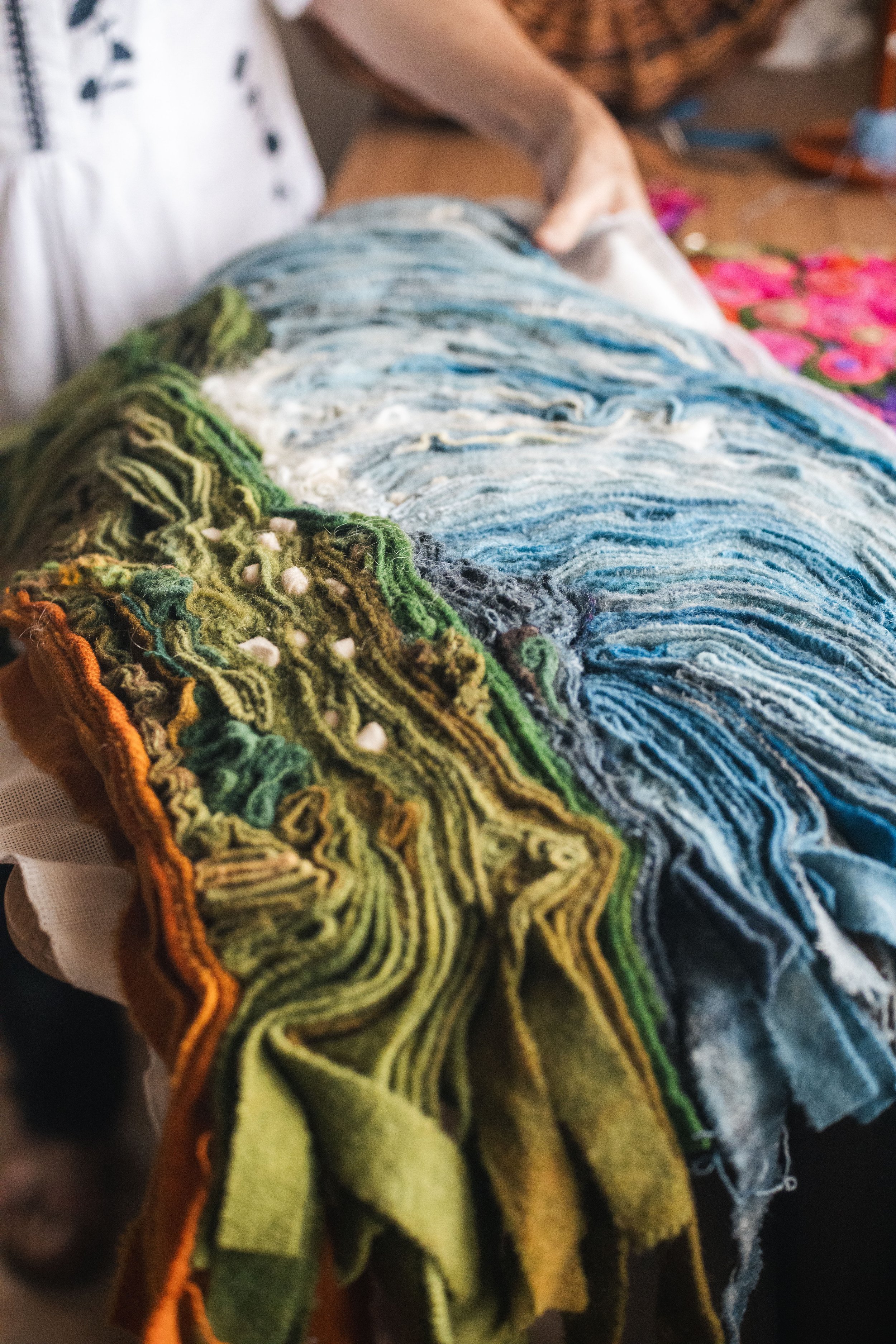
Published 05 July 2024
Written by:
Photography: Daniel Somervaille
Textile art has been weaving itself into the realm of Fine Art since the Fibre Arts Movement in the 1960s.
Yes yes, those good-old-days of geometic patterns, bright colours, mini skirts and go-go boots were also a time that birthed a wave of artists, mixing unconventional materials like plastics and metal alongside natural fibres; an embrace of three-dimensional fibre expressionism and a near universal groundswell of macrame as an artform. . . what a time to be alive!
Yet the history of textile art is a history almost as old as humanity itself; an art form mastered (almost ubiquitously so) across cultures and social classes, spanning the spectrum of function and form.
Quilt making or embroidery, knitting or weaving, humans have been creating for practical and decorative purposes for thousands of years. Whether to keep your loved ones warm or to educate the community, that storytelling aspect has grown into artistic self-expression. Now, narratives are woven with intricate details and rich colours into deliciously textural, malleable forms.
Through improvisation and experimental techniques, contemporary artists, such as Annie Albers, Sheila Hicks and Faith Ringold have been pivotal in introducing the art world to the merits of fibre, playing with tradition and play with tradition, expanding the art form into the present day.
Locally, we have textile artist Barb Stephenson.
Always a sewer, Barb made her own dolls clothes using her mother’s dressmaking scraps before moving on to sewing her own clothes and that of her children’s; not to mention those everyday functional household elements like quilts and curtains, blankets and rugs. It was retirement that Barb the time to explore textile art, expand these skills from functional to the artistic.
"I love of all things fibre, fabric and threads, and became fascinated with the colour, texture and shapes I could create using woollen fabrics, old clothes and dressmaking scrapes", Barb explains.
"I realised that by re-dyeing and stiching together individual strips of fabric, I could layer them to build the image; the edge of each strip like a pencil line in a drawing. I could create this sense of depth and immersiveness - like drawing the land in textiles", she continues.
Heavily inspired by her travels around Australia, Barb explains that she sees the landscapes as a series of lines and dots.
"I'll generally start with a memory of a landscape, a golden wheat field on a sunny day or clouds above a mountain range", she explains. Whereas my more abstract pieces evolve as I play will colour and line".
As the individual strips are stitched together, they begin to melt into each to form a dense area of colour, “I love the way the fabric changes if I pull the threads and distort the shapes”.
When talking about what excites her when working with fibre, Barb is clear, “textile art asks us to feel it”. This tactile quality of textile art invites the audience to engage with the art object AND the artist.
There's a very hands-on nature to the medium so the hand of the artist will always be present. Gliding through fingers, fibre is stretched, dyed and woven, materials are folded and pinned in place and needles click as the artwork is pulled into shape.The entire artistic process travels an ongoing conversation of raw material through to art object, and by upcycling her materials her artworks “carry the memories and marks of their former use”.
With a concern for textile waste and a focus on sustainability, recycling is an important aspect to Barb’s practice. “Our world is drowning in waste with textiles waste in particular causing huge problems. So to make art from upcycled textiles, I can contribute in a small way to finding a solution and hopefully turn some waste into something beautiful”.
“There are many different ways to make art” she says, “textile art is [just] what makes my heart sing”.
Do you have a campaign we should know about? Please let us know!






